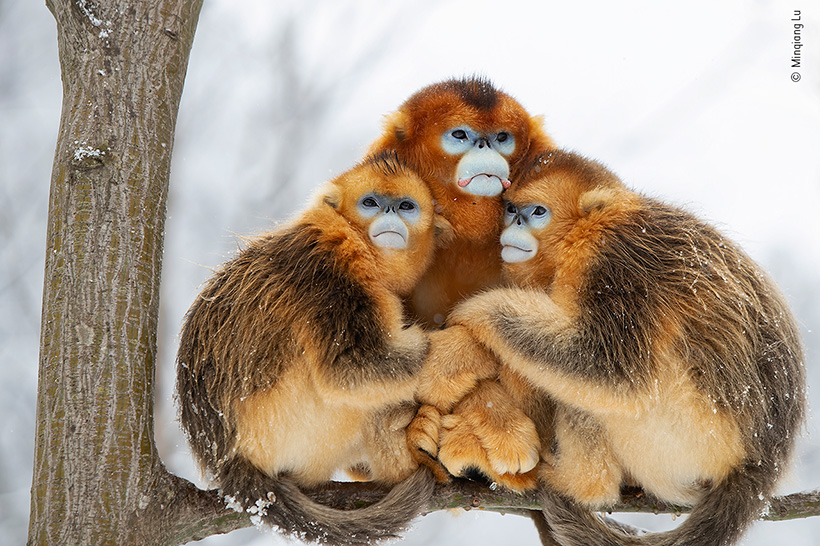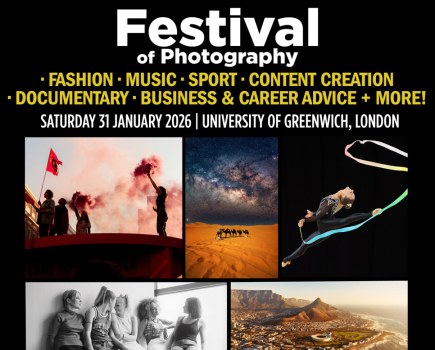The Wildlife Photographer of the Year (WPY) People’s Choice Award shortlisted images have been announced and voting will take place from today until the 2nd of February 2023.
The top five images will be displayed online, along with the winners of the fifty-eight-competition announced earlier this year. The winner will be showcased in the Wildlife Photographer of the Year voting screens at the Museum until the exhibition closes on the 2nd of July 2023.
For the first time, the public will be able to vote for their favourite image using interactive screens located inside the newly designed Wildlife Photographer of the Year flagship exhibition at the Natural History Museum. Voting is also open online.
Dr Douglas Gurr, Director of the Natural History Museum says, ‘Voters will have a challenge to choose from this stunning range of photographs which tell vital stories and connect people to issues across the planet. We are looking forward to finding out which of these images emerges as the favourite.’
Wildlife Photographer of the Year is developed and produced by the Natural History Museum, London.
See some of the shortlisted images below:
Hyena highway by Sam Rowley, UK
Location: Harar, Ethiopia
Technical details: Nikon D500 + 10–20mm f3.5 Sigma lens; 1/10 sec at f3.5; ISO 1000; Nikon SB-28 flash; Camtraptions remote trigger
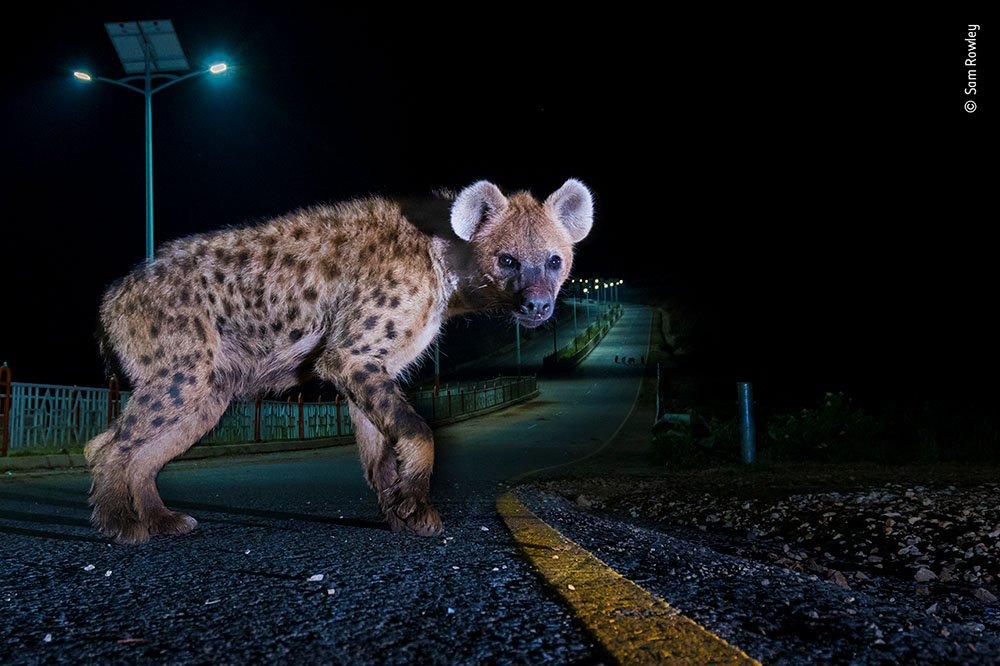
Hyena highway. Photo credit: Sam Rowley, Wildlife Photographer of the Year People’s Award Shortlist.
Spotted hyenas are intelligent and opportunistic animals. On the outskirts of cities such as Harar in Ethiopia, they take advantage of what humans leave behind, including bones and rotting meat. In so doing, the hyenas keep disease at bay, and in exchange the Harar locals tolerate them, even leaving them butcher’s scraps.
These hyenas are from the family group known as the Highway Clan. To photograph them, Sam set up a remote camera by a roadkill carcass. He captured the lowest-ranking member of the clan after the dominant members, visible in the background, had sauntered off.
Among the flowers by Martin Gregus, Canada
Location: Churchill, Manitoba, Canada
Technical details: Nikon D850 + 14–24mm lens; 1/640 at f6.3; ISO 100; Aquatech housing; pocket wizard trigger
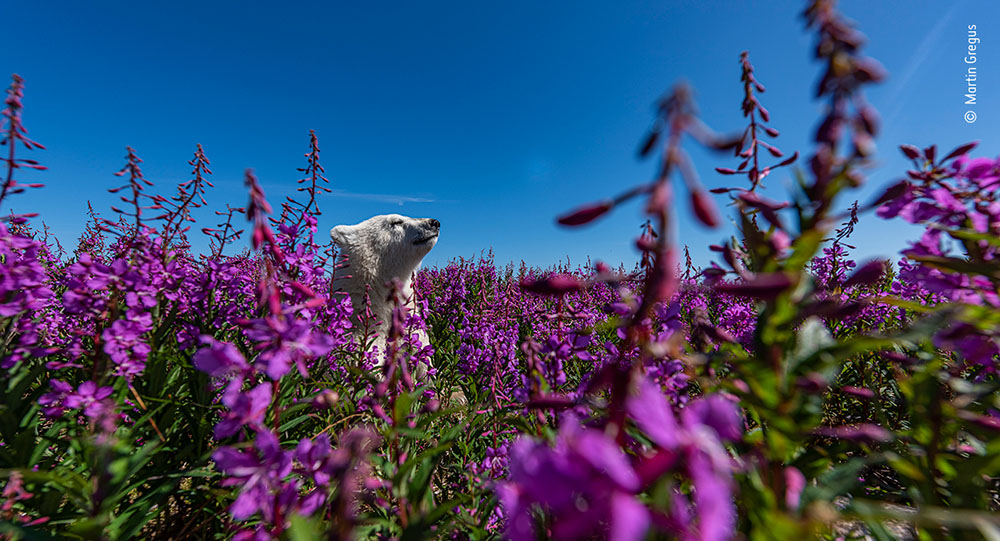
Among the flowers. Photo credit: Martin Gregus, Wildlife Photographer of the Year People’s Award Shortlist.
Martin watched this polar bear cub playing in a mass of fireweed on the coast of Hudson Bay, Canada. Every so often the cub would take a break from its fun, stand on its hind legs and poke its head up above the high flowers to look for its mother.
Wanting to capture the world from the cub’s angle, Martin placed his camera – in an underwater housing, for protection against investigating bears – at ground level among the fireweed. He then waited patiently a safe distance away with a remote trigger. Not being able to see exactly what was happening, Martin had to judge just the right moment when the bear would pop up in the camera frame.
A golden huddle by Minqiang Lu, China
Technical details: Canon EOS-1DX Mark II + 70–200mm f2.8 lens; 1/800 sec at f4; ISO 320; tripod
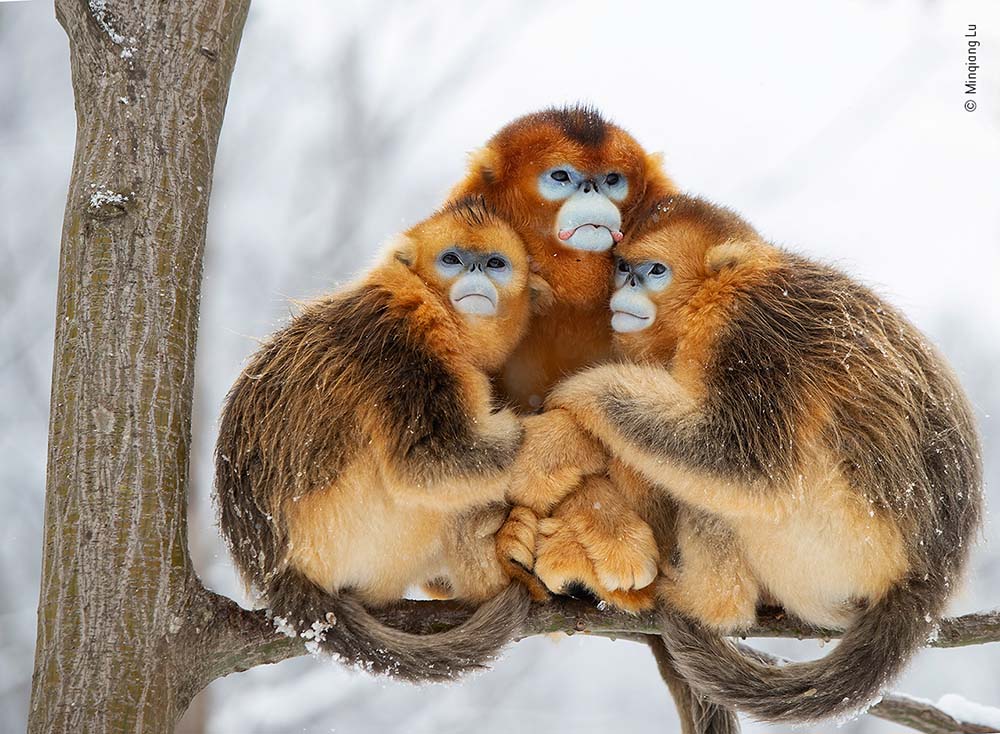
A golden huddle. Photo credit: Minqiang Lu, Wildlife Photographer of the Year People’s Award Shortlist.
Two females and a male golden snub-nosed monkey huddle together to keep warm in the extreme winter cold. Threatened mainly by forest loss and fragmentation, this endangered species is confined to central China. Restricted to living high up in the temperate forests, these monkeys – here in the Qinling Mountains in Shaanxi province – feed mostly in the trees, on leaves, bark, buds and lichen.
Minqiang knew the area where a troop of monkeys often rested and, in heavy wind and snow, he walked up the mountain for almost an hour carrying his photographic equipment. Photographing from a slope opposite the tree in which the group was huddled, he stayed put for half an hour in temperatures of -10°C (14°F) before he was able to achieve this eye-level composition.
Covid litter by Auke-Florian Hiemstra, Netherlands
Technical details: Pentax K1 + 28–70mm f2.8 lens; 1/200 sec at f9; ISO 250; Kaiser studio light

Covid litter. Photo credit: Auke-Florian Hiemstra, Wildlife Photographer of the Year People’s Choice Award Shortlist.
A young perch was found trapped in the thumb of this surgical glove discarded in a canal in The Netherlands. Since the onslaught of Covid-19, gloves and face masks have littered land and sea.
This perch was found by citizen scientists on a weekly canal clean-up in Leiden. The spines on its back prevented the fish from escaping by backing out – the torn thumb probably the sign of its final struggle. The glove formed the basis of a scientific study that has documented the range of animals impacted by Covid-19 waste during the pandemic – in this case, it’s the material that helped protect us that has proved to be a danger to wildlife.
Fox affection by Brittany Crossman, Canada
Location: North Shore, Prince Edward Island, Canada
Technical details: Canon 5D Mark IV + 500mm lens; 1/1600 sec at f7.1; ISO 2000
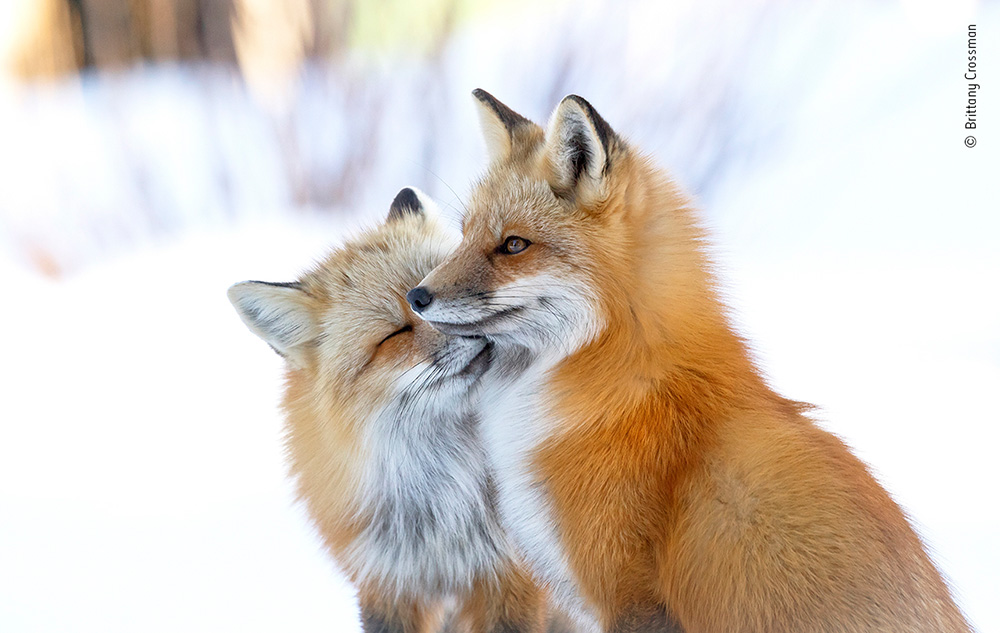
Fox affection. Photo credit: Brittany Crossman, Wildlife Photographer of the Year People’s Award Shortlist.
On a chilly day in North Shore on Prince Edward Island, Canada, a pair of red foxes, greet one another with an intimate nuzzle.
The red fox’s mating season is in the winter, and it is not uncommon to see them together prior to denning. This special moment is one of Brittany’s favourite images and one of the tenderest moments she has witnessed between adult foxes.
Wildlife Photographer of the Year 58 exhibition at Natural History Museum
A redesigned exhibition featuring all of the awarded images opened at the Natural History Museum in London on Friday 14th October. The flagship show includes short videos, quotes from jury members and photographers. Plus insights from the scientists who work at the museum. Visitors are invited to explore how our human actions have an impact on the natural world. The London exhibition closes in July 2023 and will then tour across the rest of the UK. As well as to international venues across Europe and the rest of the world.
- Open Friday 14 October 2022 and closes Sunday 2 July 2023.
- The exhibition is open Monday – Sunday, 10.00-17.50 (last admission at 16.30), and weekends sell out quickly.
- Adult tickets from £17.00*, concession tickets £13.50*, and child £10.25* (*Prices excluding optional Gift Aid donation to the Museum.) Book your tickets here.
- The exhibition was designed by a team led by RIBA Stirling Prize winning Witherford Watson Mann architects. We worked with graphic design studio Wolfe Hall, and Lightheory Studio, TM Lighting and Fine Art Lighting.
Use #WPY58 on social media.
Enter the 59th Wildlife Photographer of the Year competition
Inspired by the images you see here? Enter the 59th edition of the Wildlife Photographer of Year competition.
- Closes for entries at 11.30am GMT on Thursday 8 December 2022.
- Entrants to the adult competition may enter up to 25 images for a £30 fee. This increases to £35 in the final week of the entry period from 11.30am GMT 1 December to 11.30am GMT 8 December.
- An entry fee waiver has been introduced for photographers entering the adult competition who live in these 50 countries.
- Entrants aged 17 and under may enter up to 10 images for free.
Visit nhm.ac.uk/wpy/competition for more information and full rules.
See more competitions to enter here.
Related articles:
Cactus bee close-up wins Wildlife Photographer of the Year 2022!
The best photography competitions to enter in 2021
Best photography exhibitions to see in 2022

